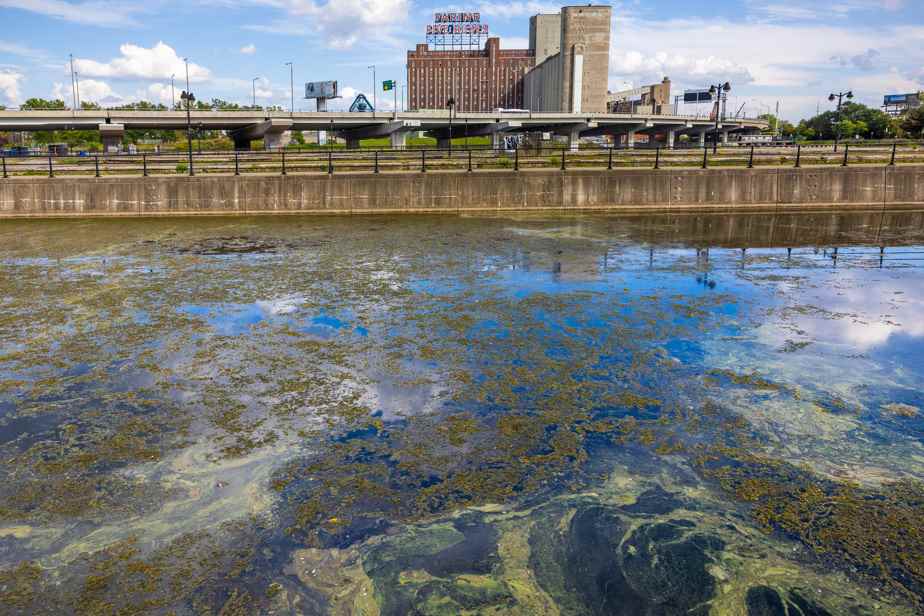The Lachine Canal is infested with blue-green algae, to the point where authorities are warning the public to stay away from its waters.
Posted at 8:26 p.m.
In a short message published Monday, Parks Canada, the organization responsible for the Lachine Canal National Historic Site, indicated that it had “potentially detected the presence of blue-green algae (cyanobacteria) in localized places” of the course of artificial water.
“The algae were observed almost everywhere along the waterway, with no specific sector that was more problematic,” it says.
The federal agency warns the public that it is important “to avoid direct and prolonged contact with water”, to keep young children away from the contaminated area and not to allow pets to play or drink from it. the water.
Moreover, it is recommended to keep a distance of at least 3 meters from blooms or foam.
As their name suggests, cyanobacteria, commonly known as blue algae or blue-green algae, can be recognized by their color. These microorganisms can contain toxins and cause stomach upset, skin rashes, headaches, vomiting or fever. If ingested, they can also be harmful to animals.
If the presence of blue algae in the Lachine Canal is not abnormal, as it is found in small quantities in most bodies of water in Quebec, it is the fact that they are found there in excess. which can be considered dangerous, indicates the geomatician specialized in limnology at the University of Sherbrooke Yannick Huot.
There for good?
But how could the algae have proliferated to such an extent in the urban canal? The answer to this question is not yet clear, but as Yannick Huot points out, they proliferate in the presence of nutrients such as nitrogen and phosphorus, elements that are usually found more in agricultural sectors.
What’s more, “blue algae love the heat and it was very hot this summer,” adds Yannick Huot.
The presence of blue algae in the channel is not definitive, he also specifies. “With the arrival of colder weather, there will be no more this fall. But if the nutrient or temperature conditions return, next summer, for example, there is a good chance that they will return,” says the expert.
Also, given climate change, the conditions conducive to the proliferation of blue-green algae are set to become more and more frequent, adds Yannick Huot.
Parks Canada had still not called back The Press in the evening.

